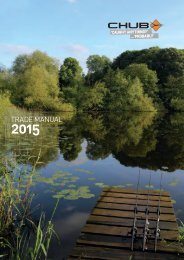CHAMPAGNE
This combination of weather influences makes for constant, moderate precipitation – a near-ideal pattern of rainfall that provides the vines with just enough water to produce quality fruit. Mean annual rainfall for the Champagne region as a whole is close to 700mm, ranging from 600mm to 900mm depending on the area.
This combination of weather influences makes for constant, moderate
precipitation – a near-ideal pattern of rainfall that provides the vines with just
enough water to produce quality fruit. Mean annual rainfall for the Champagne
region as a whole is close to 700mm, ranging from 600mm to 900mm depending
on the area.
Create successful ePaper yourself
Turn your PDF publications into a flip-book with our unique Google optimized e-Paper software.
24<br />
Clarification<br />
(debourbage)<br />
Control of fermentation<br />
Clarification<br />
(debourbage)<br />
Sulphuring<br />
As the juice is extracted, it flows into open tanks (known locally as ‘belons’)<br />
where it is treated with sulphites (sulphur dioxide or SO2) at the rate of 6-10g/hl<br />
depending on the varietal, the condition of the grapes and the musts in question<br />
(whether cuvée or taille).<br />
Sulphites are used as a preservative. Their antiseptic properties help to inhibit<br />
the growth of moulds and unfriendly indigenous bacteria. Their antioxidant<br />
action safeguards the physicochemical and sensory quality of wines.<br />
Clarification (débourbage)<br />
Débourbage is the settling of the freshly pressed grape juice prior to fermentation,<br />
so as to produce wines with the purest expression of fruit.<br />
In the first hours, this produces a cloudiness due to enzymes that are either<br />
naturally present in the juice or added. The flocculated matter forms a sediment<br />
at the bottom of the vat along with other particles suspended in the juice (particles<br />
of grape skin, seeds, etc). After 12-24 hours, the clear juice is drawn off and<br />
clarified by fining. The sediments or ‘bourbes’ (1-4 per cent of the volume) are<br />
recorded and sent to the distillery.<br />
The clarified musts are transferred to the ‘cuverie’ (the room containing the<br />
fermenting vats) to commence the first stages of fermentation.

















